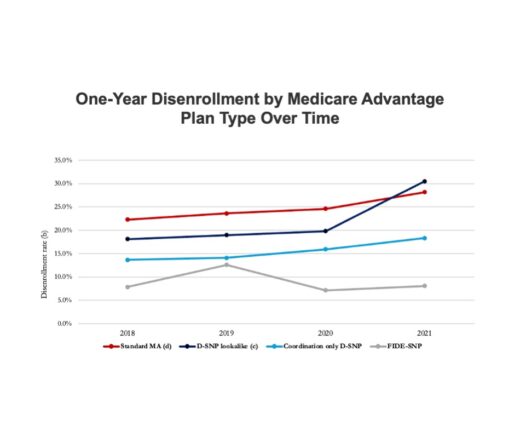
One Year, One Enrollment: Continuous Medicaid Eligibility Matters for Kids’ Health
New Findings Highlight the Value of 12-Month Eligibility in Reducing Care Gaps and Paperwork Burdens
News
As the U.S. Senate opens debate on a sweeping budget reconciliation bill passed by the House in May, leading health care scientists are warning that the legislation—formally titled the “One Big Beautiful Bill Act”—would strip health insurance from millions and cause tens of thousands of preventable deaths annually.
In a June 18 virtual seminar hosted by the University of Pennsylvania’s Leonard Davis Institute of Health Economics and the nonprofit health policy newsroom Tradeoffs, researchers projected that the bill’s Medicaid cuts, shortened Affordable Care Act enrollment windows, and new administrative hurdles could increase the nation’s uninsured population by 60% and result in more than 51,000 additional deaths each year.

The research scientists described the bill as an effort to slash funding and cut spending by erecting steep logistical, administrative and paperwork barriers, and delaying rules in ways that block large numbers of people from successfully signing up for or using either Medicaid or the Affordable Care Act insurance marketplaces. Essentially, the bill’s health care savings will come from denying insurance to very large numbers of people who are qualified to have it but will be unable to surmount the new barriers to actually get it.
The event was moderated by Dan Gorenstein, Founder and Executive Editor of Tradeoffs. The panel scientists were Rachel M. Werner, MD, PhD, Executive Director of LDI and a Professor and researcher at both Penn’s Perelman School of Medicine and the Wharton School; Eric Roberts, PhD, LDI Senior Fellow and Associate Professor at the Perelman School; and Aditi Vasan, MD, MSHP, LDI Senior Fellow, and Assistant Professor at both the Perelman School and Children’s Hospital of Philadelphia. All three have deep research portfolios around government and commercial health insurance.
The main points they made during the seminar were that the bill now before the Senate would:
– Slash federal funding of Medicaid by $1 trillion- Force eligible people off Medicaid with increased administrative barriers
– Reduce sign-ups in the ACA marketplaces by shortening enrollment periods
– Reduce sign-ups in the ACA marketplaces by eliminating enhanced subsidies
– Delay a rule in order to deny Medicare-Medicaid dual eligibles drug coverage
– Create work requirement barriers that strip coverage from people already working
– Delay new nursing home staffing standards to 2035
– Ultimately cause a 60% increase in the uninsured population and 51,000 preventable deaths per year
According to the scientists, the annual estimated mortality impact of these policies is:
– 20,000 deaths/year from loss of Medicaid and ACA coverage
– 13,000 deaths/year from delayed nursing home staffing rule
– 18,000 deaths/year from loss of drug access among dual eligibles
– For a total of 51,000 preventable deaths per year

“We know a lot about the relationship between having insurance coverage through Medicaid and how likely you are to die without it,” said Werner, who was one of the six health care scientists from Penn and Yale University asked a month ago by the Senate Finance Committee and the Senate Committee on Health, Education, Labor & and Pensions to estimate the potential mortality effects of the Trump bill. “There is a preponderance of evidence that insurance, particularly Medicaid, saves lives. It’s estimated that for every 1,000 people on Medicaid annually, something between 1 and four lives a year are saved.”
“The math done by our Yale colleagues found that if 7.7 million people are going to lose their Medicaid coverage, that is going to result in 11,300 deaths per year,” Werner continued. “But the issue is not just about the changes in the bill but what was left out of the bill as well. In 2020 Congress provided subsidies for insurance purchased through the ACA marketplaces that made coverage much more affordable for many low-income adults and increased enrollment by about 15 million. But those subsidies expire unless renewed by Congress this year and this bill does not extend them. So, we expect another 5 million people to lose coverage resulting in an additional 8,800 preventable deaths. That’s how we get to the number of 20,000 annual preventable deaths as people are pushed off Medicaid.”

Roberts, who was also involved in the potential mortality report for the two Senate Committees, pointed out that even though taking Medicaid away from people might only cause about 1 to 4 more deaths per 1,000 people annually, that fact is a big deal. That’s because in this group of people about 2 or 3 out of every 100 usually die. So, adding the extra deaths caused by this bill would make the number of people dying go up by 15 to 20% just because they no longer had insurance. This is a serious increase in the mortality rate.
“If you add up all the pieces of this bill including the failure to extend the enhanced marketplace subsidies,” Roberts said, “you add 16 million people to the uninsured population—that’s an increase of 60% in the number of uninsured people across the country.”
Gorenstein noted that Republicans have framed this legislation as a way to rid Medicaid and the ACA marketplaces of “waste, fraud, and abuse,” and would require beneficiaries to undergo more frequent eligibility checks than the current once-a-year practice. He asked if such a reform would likely push more people off Medicaid.
Vasan, who researches the administrative burdens and logistical challenges that make it easier or more difficult for people to access government health care benefits, said yes, it would.

“The evidence on this is clear,” Vasan said. “More frequent eligibility checks for a program like Medicaid create paperwork barriers that push eligible folks off coverage. Studies show that about 1 in 10 Medicaid enrollees experience coverage gaps when they lose and then regain coverage within a year. It’s estimated that 70 to 90% of those coverage gaps or ‘churn’ happen at the time of recertification, a process that can be a confusing for beneficiaries. Most people who lose Medicaid at the time of recertification are still eligible for the program. And so, conducting eligibility checks every six months is unlikely to reduce fraud or abuse, and is, in fact, very likely to both increase paperwork burdens for states who have to process recertification much more frequently and result in coverage loss for administrative reasons.”
Roberts, who is an expert in the field of Medicare and Medicaid policy issues, noted that “I have a family member…whose Medicaid enrollment form was 17 pages long. You can imagine that for older adults who may lack social support and other resources or be suffering from memory decline, this kind of more frequent application complexity makes it harder for them to enroll or recertify in Medicaid benefits that they actually qualify for. We already know from research that only about half of low-income Medicare beneficiaries who qualify for Medicaid actually are enrolled. This bill will increase that number.”
One of the most contentious tactics for cutting Medicaid costs in recent years—work requirements—is in this bill and would force Medicaid beneficiaries to engage in a monthly administrative procedure to prove they are employed, attending school, in job training, or engaged in voluntary public service.
A few states have already tried work requirements, including Arkansas, Kentucky, New Hampshire, and Georgia but courts ultimately shut down the first three states’ programs. Georgia is the only state currently imposing the condition for Medicaid eligibility. The Trump bill would make work requirements mandatory for Medicaid across the country.
Vasan noted that during the first six months of work requirements in Arkansas, 18,000 people lost their Medicaid coverage.
“For 85 to 90% of those, coverage loss was due to administrative or paperwork burdens and not because they didn’t meet work requirements. Many people who were already working had their coverage cut off.” Vasan said. “Almost half of all beneficiaries in survey studies didn’t know about the new work requirement, and many of those who did know had trouble navigating the complex online system that the state set up for reporting their work hours. The data showed that about 92% of Medicaid insurance adults were either working or qualified for exemptions like caregiving responsibility, illness or disability. So, imposing work requirements adds burdens that can be devastating for patients’ health and access to care, without the benefit of actually increasing workforce participating.”
“Administering work requirements is also a significant burden and an unfunded mandate on states,” Vasan continued. “They have to set up a whole new system that allows people to report their hours monthly or some other frequency. States then need employees at the other end in charge of processing this reporting as it happens, identifying errors and, troubleshooting the beneficiary or cutting off their coverage. It is a huge amount of information that states aren’t currently processing. And they would need to quickly complex administrative systems to do this.”
As the seminar came to a close, Gorenstein ask each of the panelists to name the most important thing they think is at stake in this bill. Their answers:
Vasan: “These changes aren’t eligibility reforms, they are really barriers to coverage for eligible people. We have really good data now from Arkansas and other states showing that administrative burdens, not actual eligibility, is what drives coverage loss. This bill will also impose significant administrative burdens on people accessing other programs like Supplemental Nutrition Assistance Program or food stamps. And so low-income adults and families with children are going to be hit hard by administrative burdens across multiple sectors. There’s a lot at stake here for our lowest income families.”
Roberts: “This is not some sort of ‘other’ population that’s being affected. More than 70 million people are covered by Medicaid, 20 million by marketplaces. They are our community members, our colleagues, and in some cases, our family. So, given the scope of these programs and the size of the changes being contemplated, the effects are going to be felt extensively and across communities and in many individual families.”
Werner: “Medicaid touches millions of people in the United States. Two thirds of the population report knowing someone who has received benefits through Medicaid. So, these administrative burdens, which the administrative is selling as ‘no major changes to the Medicaid program,’ create real barriers to enrollment. And it’s not just about the dollars and cents the bill is trying to save. It’s really going to cost human lives at the end of the day. And so, I think that is the take home.”


New Findings Highlight the Value of 12-Month Eligibility in Reducing Care Gaps and Paperwork Burdens

The Prison System Often Fails to Meet Even Basic Standards for Pre- and Post-Operative Health, Experts Say

Chart of the Day: Fully Integrated D-SNPs Kept These Vulnerable Patients Enrolled, a New Study Finds

Photo & Text Story of an Urban Health Lab Initiative to Improve Health and Community Stability

Mandated Nurse-to-Patient Ratios Have Cut Deaths, Eased Burnout, and Saved Millions. Policymakers Must Act Now to Protect Patients

Just Discussing Punitive or Supportive Policies—Even Before They’re Enacted—Can Impact Physical and Mental Health, Especially for Marginalized Groups, LDI Fellow Says